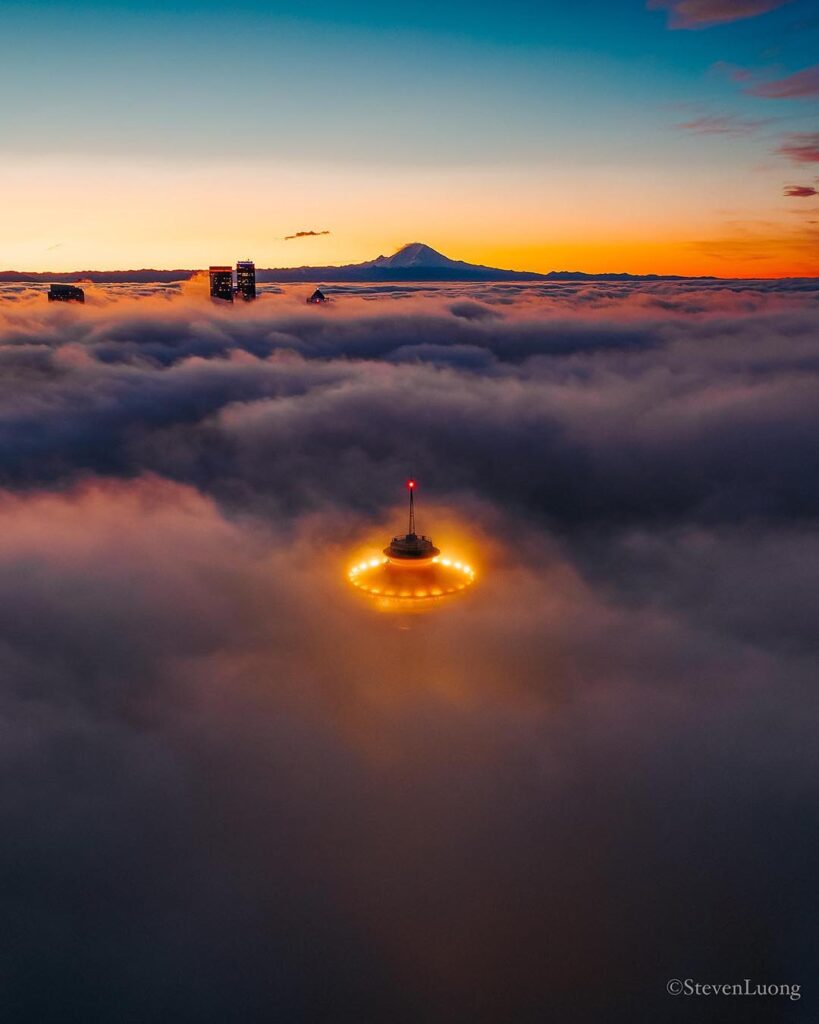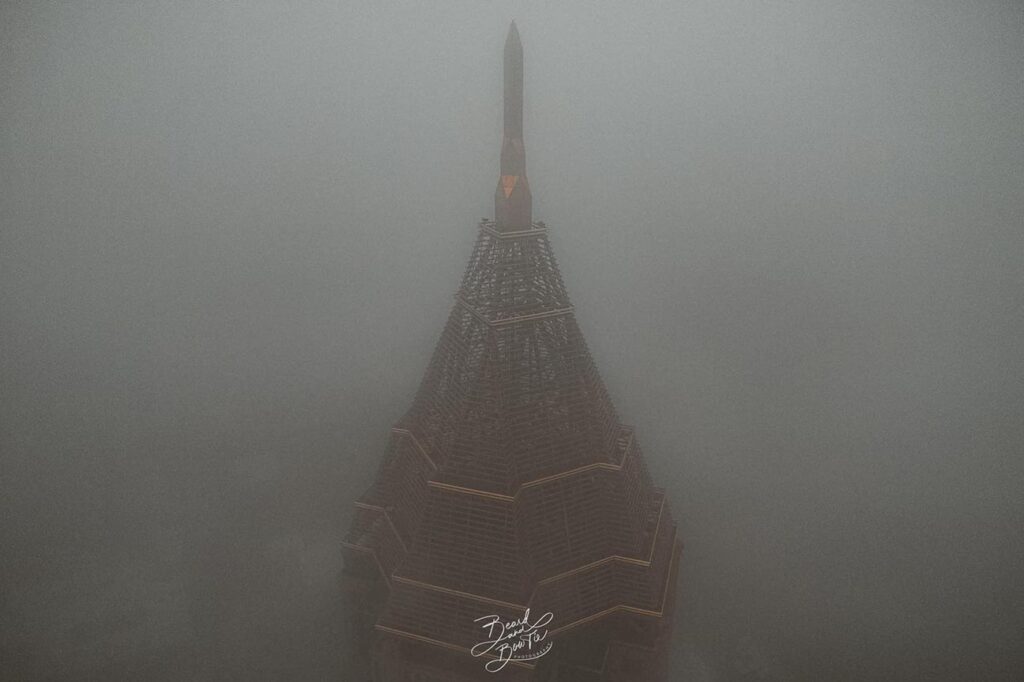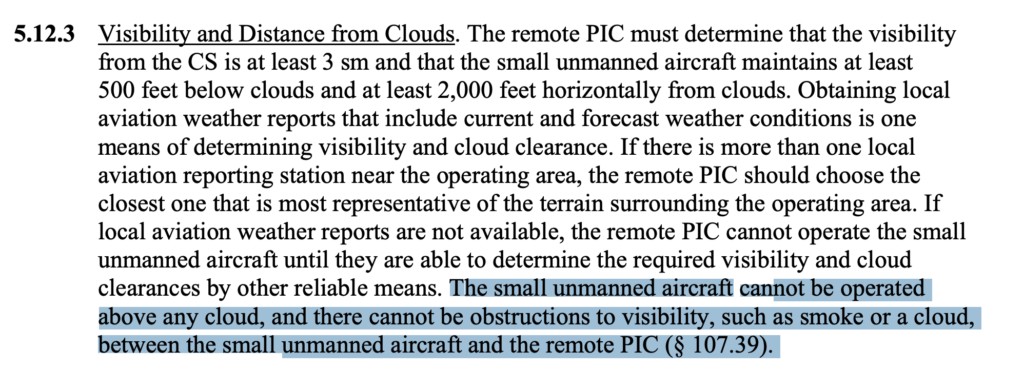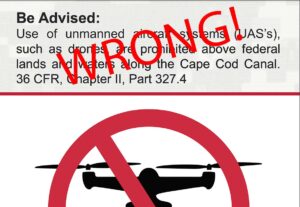According to a recent exchange with the FAA UAS Support Center (UASHelp@faa.gov), the answer is yes…
… and the answer is no.
Surprised? Yeah, we’re not either…
So, when can we, and what can we not, fly our drones over the clouds? There is a lot to unwrap here, so let’s dive in.
Obviously, there are Visual Line of Sight (VLOS) rules under both 14 CFR §107.31, as well as under the CBOs currently approved under 49 USC §44809.
And then there is the statement about not being allowed to fly over clouds at all in Advisory Circular 107-2A. We’ll get into that in a bit.
Let’s start by talking about when we should NOT fly over clouds.
Here is an example of when not to. This image was posted in the Commercial Drone Pilots Facebook group. It caused quite a stir at the time, but also ignited a very good discussion. It also birthed this article. We don’t know the exact circumstances about where and how this photo was taken, but the general consensus is that it was captured outside both 107 and 44809 rules. The person who took this was contacted by a fellow local pilot to help him understand the rules better (awesome way to approach these things BTW). He was very receptive to that discussion. The FAA has asked us to self-police first when instances like this crop up. It looks like it worked this time.

Under 14 CFR §107, you have to pay attention to §107.31 (VLOS rules), §107.51 (c), (d)(1), & (d)(2) (weather minimums), and §107.39 (Ops Over People). If you’re flying from below the clouds or fog, you’re not only violating multiple Federal Regulations, you’re being incredibly reckless, which would then bring §107.23 into play. Which is the all encompassing “careless or reckless” catch all, rightly used for many investigations.
And what about a low flying medical helicopters? We won’t even go there in this article.
Under the FAA’s Recreational Exception, 49 USC §44809 (2), you have to fly under an FAA approved Community Based Organization (CBO) set of Safety Guidelines. As of this writing, there are four such CBOs. There is an excellent summary video by Pilot Institute that explains the differences between the first three. And each and every CBO states you must maintain VLOS of your drone at all times (FPV with VO being the exception).
So obviously flying from under the clouds, and them into and above them, should be a non-starter for any drone owner with a modicum of common sense. Yet we see it all the time. And the three cities we seem to see if the most seem to be Seattle, Atlanta, and LA. Maybe that’s due to the sheer numbers of drone owners there.
And if the recreational flyers obtained their TRUST certificate, then they’d know that flying into and then over the clouds is not only illegal, but stupid. If you haven’t taken it, do so now. You can find that on the Pilot Institute website as well. It’s free, and required for recreational flights.
Okay so when can we fly above the clouds? Under a very, very limited set of circumstances. Remember, there is more than just VLOS rules to maintain here.
A scenario we’ve come up with where it could be legal to fly over the clouds is from a hill overlooking a very remote valley. One where you could almost guarantee no one is below you. Here in the mountains of Colorado, those types of places are a dime a dozen.
In the Colorado Rockies, we get early snows in the Fall, and we see some spectacular shots with Aspen trees jutting out of a low fog back, with fresh snow on the mountains in the background. In those cases, under the right conditions, those could be perfectly legal and safe times to fly above the clouds. You’re still flying under VLOS conditions, it’s extremely unlikely you’ll fly directly over anyone, and you’re still further than 3000’ horizontally from the clouds. And since the fog bank is definitely down to the ground, and under 400’ AGL, you’ll not have any manned aviation issues to worry about. One day I’ll fly and get just such a photo.
So as you can see, there are times when it’s legal to fly above the clouds. But we’ve all seen examples of what is VERY likely illegal and dangerous flights from the ground, and over a city. Such as the image below. We obviously can’t say with 100& accuracy this is an illegal flight, but I’m not sure under what conditions this drone flight could be legally flown.

Yes, we can get some spectacular imagery of cityscapes in the fog at night, or during the day. But can it be done legally and safely? The only likely way is to get permission to operate from a building that is above the fog, and only stay above that building during the entire flight. That’s it. Anything else is likely violating OOP rules (& likely many other rules). It’s just not worth the risk.
So before you jump in the car to run downtown and shoot some fog shots, think twice. Shooting in a congested urban environment presents a unique set of logistic and legal challenges under the best of circumstances. Add fog to the equation, and it’s practically undoable from a safety aspect.
So please, just don’t.
A couple of random things that came up during this discussion…
First, in my discussion with the FAA UAS Support Center, I was told the FAA doesn’t consider fog a “cloud on the ground”. It’s an “obscuration to visibility”. So given that, one could possibly assume that according to the FAA, 107.51 (c) & (d) may not come into play with flights over fog.
But according to WXResearch.org , fog and clouds are identical in nature, except that fog is near the ground, and clouds can be at any elevation. So don’t bet the farm on the FAA’s definition of fog when it comes to satisfying Part 107 rules. There seems to be a bit of leeway in the interpretations.
Which brings us to the second subject, AC 107-2A, Section 5.12.3 in particular. In that advisory circular, it specifically states “The small unmanned aircraft cannot be operated above any cloud…”. Taken at face value, that means under no circumstances may a drone operator fly above a cloud. And depending on who’s definition of clouds one uses, that could mean fog as well. Also, “cannot”, as opposed to “may not”, has a different connotation. Interesting choice of word use.

An Advisory Circular (AC) is used by the FAA to provide guidance for compliance with, among other things, sections of 14 CFR §107. ACs are not a legal interpretation of rules. However, they can be used in an investigation in the event of an incident. So it’s very advisable to follow ACs whenever possible. And many are scenario specific as well.
Also, an AC will not override Federal Regulations, but they’re there for a reason. So as mentioned, it’s a good idea to follow them where applicable.
And since the FAA doesn’t consider fog to be a cloud, 5.12.3, in my humble opinion, does not prohibit drones from being flown above a cloud, if you can do so safely and legally based on other regulations. And no, this is NOT legal advice.
And one other item…
Let’s use this occasion to discuss icing. Yes, it’s a thing. And it can happen when the ground temperature is above freezing. Fog is formed when the air temperature and dew point are usually within 5°F of each other (as you should recall from your 107 test). And if the ground temperature is close to freezing, it may very well be at or below freezing as little as 50’ AGL. Drones + icing = very bad day! When I’m worried about icing (I live in Colorado), I’ll usually put the drone up at a 75’ hover for about 3-5 minutes. I’ll watch the flight characteristics very carefully and land if I see any anomalies. After 5 minutes or so I land and check both the props and the drone body for icing. If any exists, I pack up and go home. If everything is clear, I’ll fly, but watch things very carefully.

Hopefully this clarifies and educates on all things fog/cloud/icing related when it comes to drones. When in doubt, don’t fly.
Drone Service Providers Alliance provides “Professional advocacy for Drone Service Providers throughout the United States”. Our mission statement is “A United Voice for Positive Change”. We are a dues supported 501(c)(6) organization. Dues are used to cover travel and operating expenses. No salaries are taken by Kenji and Vic for the work they do on behalf of the US UAS industry. We fully believe a rising tide raises all boats. And since we also fly drones for a living, it will benefit us as well.
If you believe in what we do, please consider joining us, we appreciate any and all support: https://dspalliance.org/join-us/
And if you have any questions, please reach out to Vic or Kenji.
Also, have you added to your drone fleet? Do you know the ins and outs of your new drone? Check out Pilot Institute’s Deep Dive Videos. Greg and crew do an great job helping you understand your drone better. And each and every Deep Dive Video is free.

